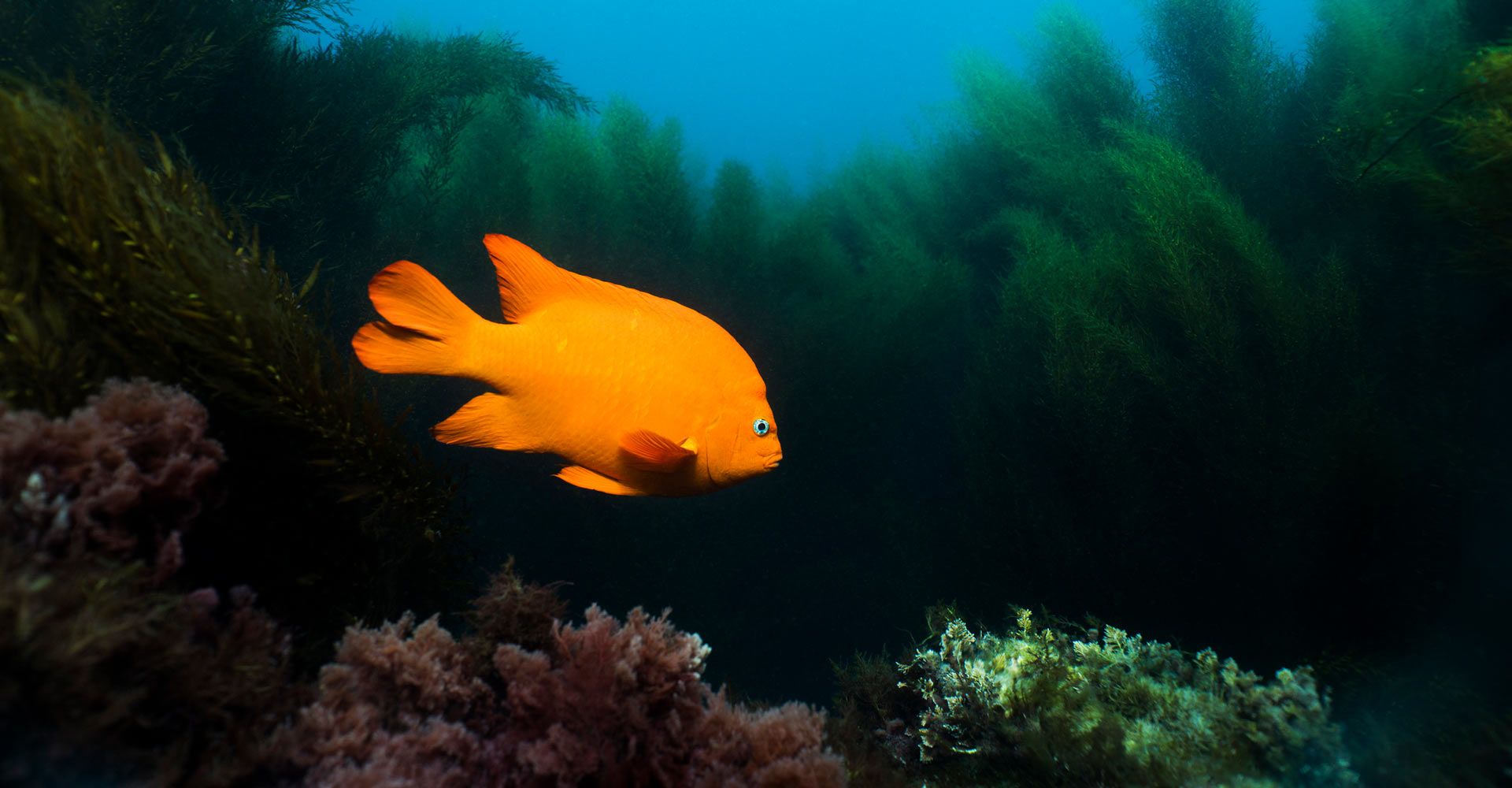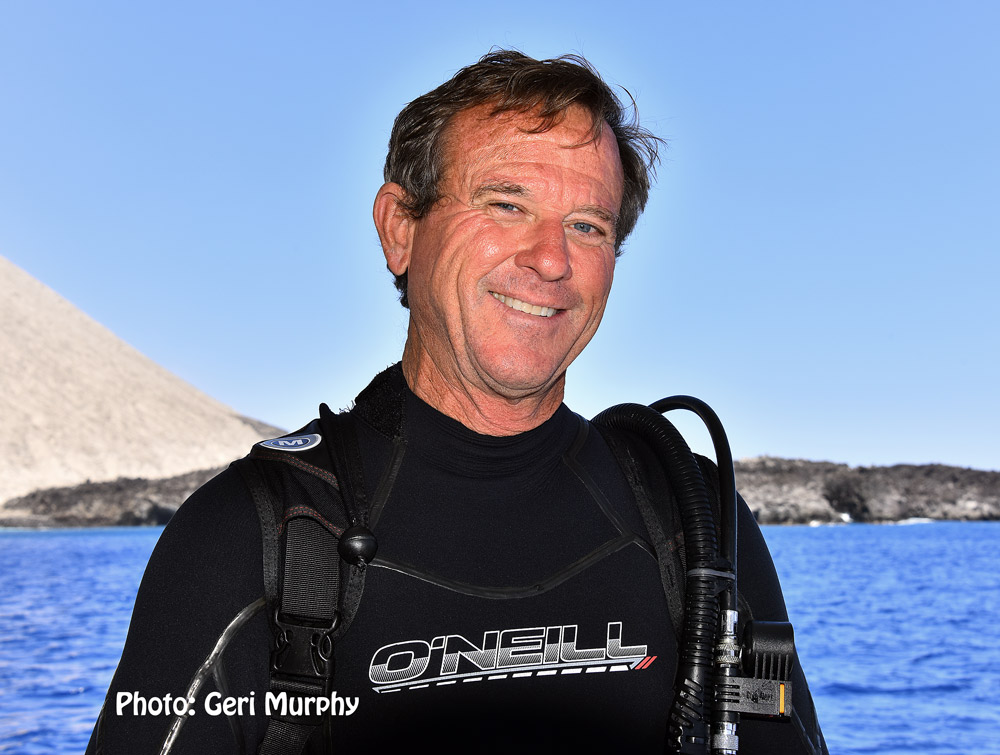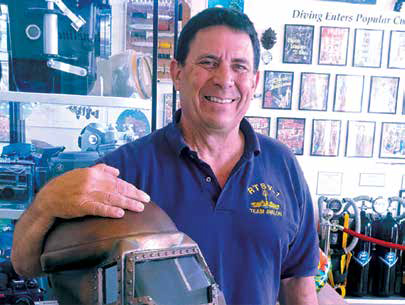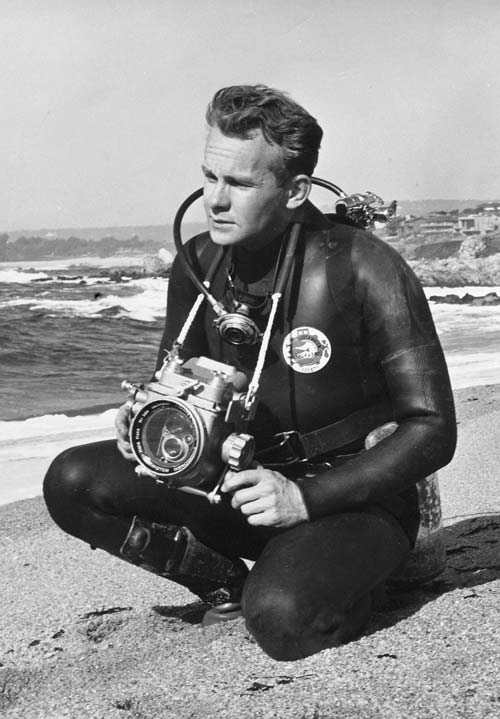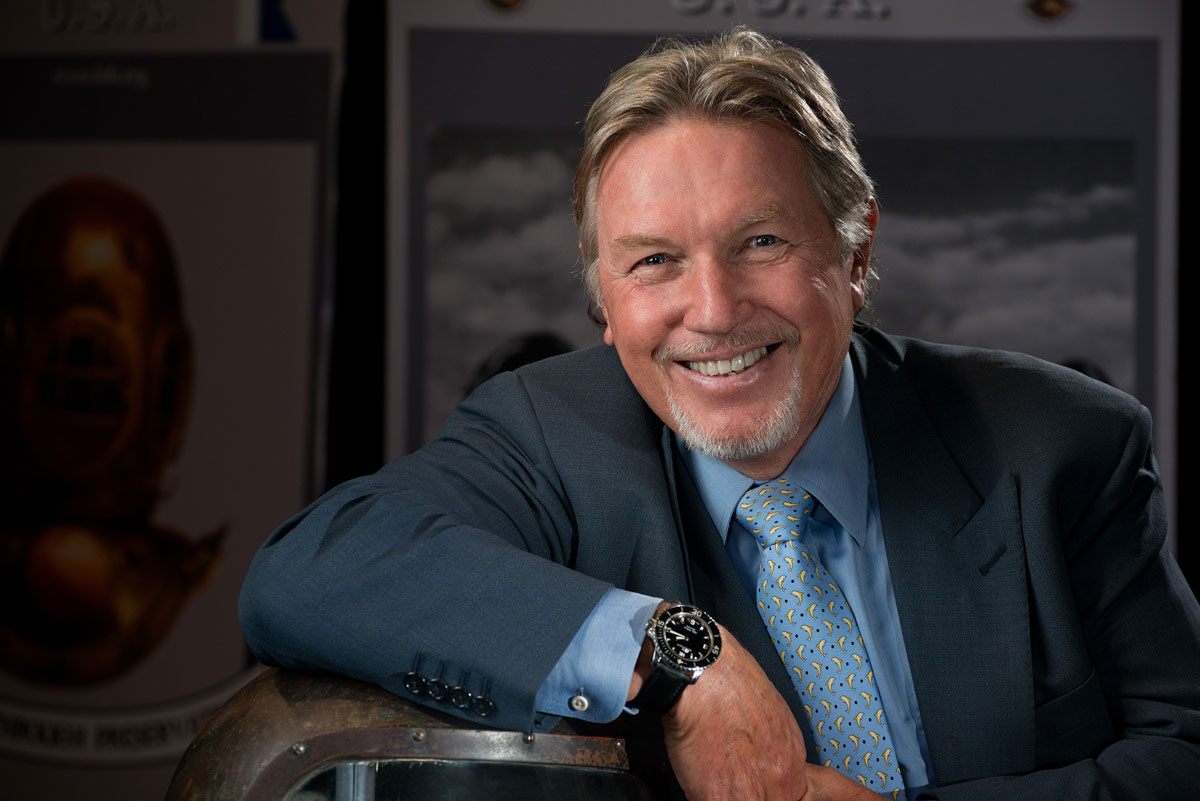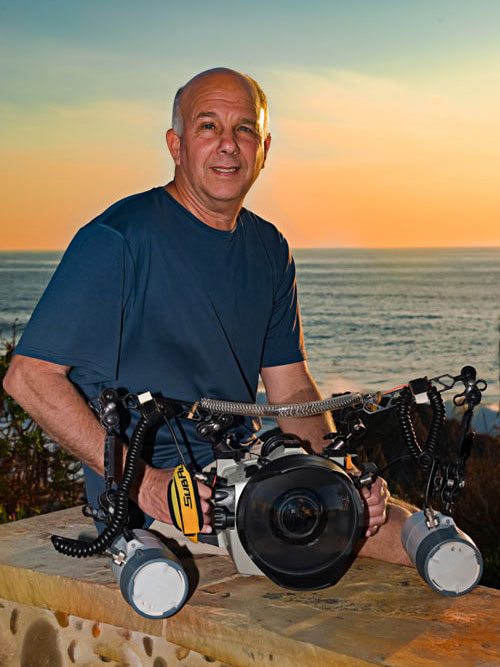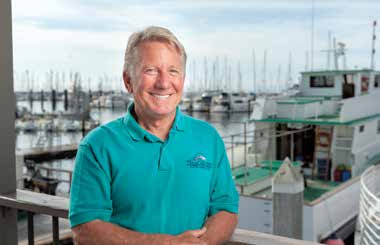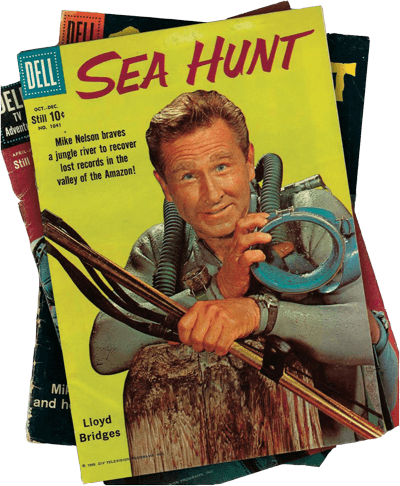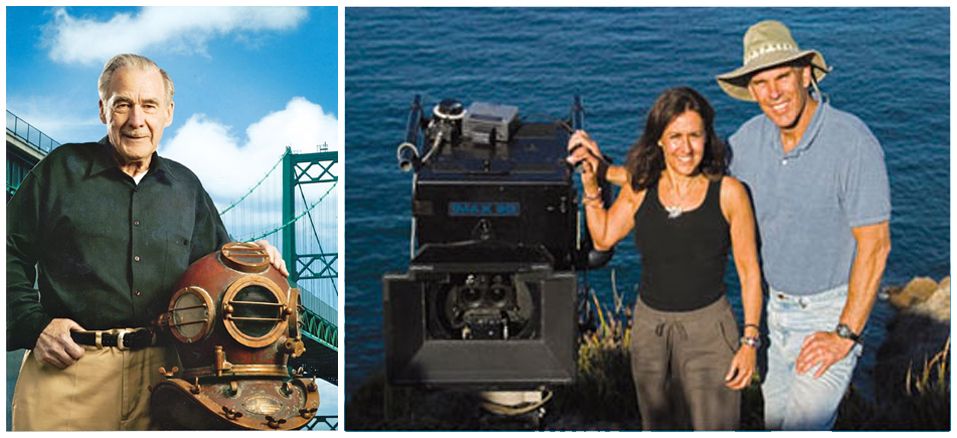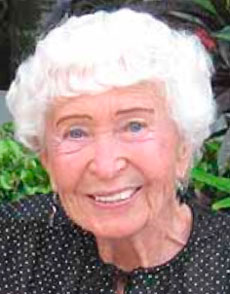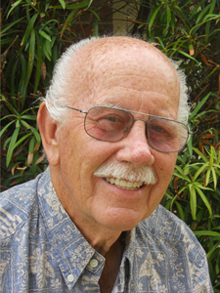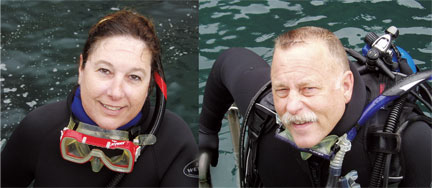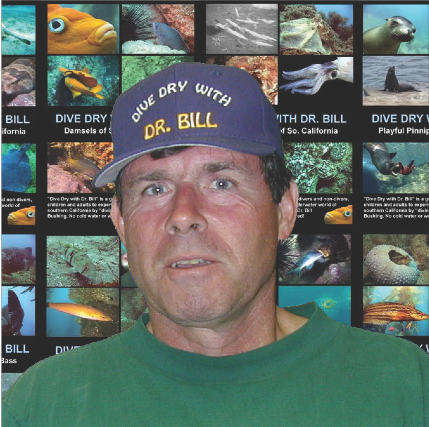For over 45 years, Ed Stetson has been training recreational, research and commercial divers. He has organized several of the largest nonprofit events to recognize diving’s legends and benefit divers. All the proceeds have been donated to the Historical Diving Society and diving scholarships that Ed has also established over the years. Ed Stetson is the man behind the scenes, quietly making things happen, but never looking for recognition.
Ed Stetson grew up in the South Bay. He was one of nine children and attended Bishop Montgomery High School. When he turned 16, his brother Dan bought him a scuba course at Dive n’ Surf in Redondo Beach, and that one gift aimed his entire life. He worked on the Redondo Beach pier to buy his scuba equipment, and when Ed transferred to the University of California, Santa Barbara in 1978, and money was tight and he dove off the beaches to eat. Ed soon became a NAUI, PADI, SSI and CMAS instructor, then a NAUI Instructor Course Director.
Ed began teaching scuba at UCSB in 1979 with Jim Holm, and with the help of Harry Ward, they developed the UCSB Scuba Club. (Today, UCSB has the largest university scientific diving program in the United States, and the UCSB Scuba Club has over 450 student members. 2025 marks Ed’s 47th year of actively teaching scuba diving at UCSB.) When Jim left for medical school, he recommended Ed for his job, and Ed began teaching the UCSB scuba program as an undergraduate. His teaching mentor, UCSB Diving Safety Officer Dennis Divins told Ed that “People always talk about doing things, but they never do,” and Ed took that to heart several times to create programs and events that have become a part of diving history.
Back to 1983. Ed had graduated and was working as a research diver on a kelp project when the El Nino storms of 1983 destroyed the kelp farm and sank their boat. He was almost broke and preparing to live out of his VW van when the phone rang. It was Club Med, New York. They offered Ed a free airline ticket to the Caribbean and a job teaching scuba. Two days later he was on his way to Eleuthra, Bahamas, then down to Cancun, Mexico. His salary was $100 per week and tipping was not permitted. That Club Med Philosophy, “You teach people to dive for the love of diving, not for the money,” became the foundation of Ed’s future teaching career.
He returned to UCSB in 1984 and became a United States Coast Guard licensed captain (200-ton master) and an Emergency Medical Technician (EMT). He was soon hired by the Santa Barbara Harbor Patrol to operate their rescue and fireboats. Ed was twice named the California Boating Safety Officer of the Year: 1989 and 2011. He retired from SBHP as a Sergeant after 30 years of service.
In 1986, Ed also began teaching at Santa Barbara City College’s Marine Diving Technology Department with his close friend Don Barthelmess. He taught a variety of courses for over 30 years. He also served as a volunteer with the Santa Barbara Marine Mammal Center for over 25 years where he helped MMC director Peter Howorth capture & rescue hundreds of sick and injured sea lions, seals, dolphins and whales. They used their diving skills to create new and unique methods of rescuing marine mammals. Together they have traveled throughout California, Mexico and the Galapagos Islands training researchers and others how to capture and care for distressed marine mammals.
Ed has the unique ability to bring people together with a simple concept: Get everybody to work together for the good of the diving community. He organized the Santa Barbara Dive Refresher & Rescue Workshops, insisting that nobody be paid, not even himself. In the first year, 57 volunteer instructors trained over 120 divers in one weekend. Ed expanded his efforts and organized the Santa Barbara Underwater Film Festivals at UCSB. New photographers presented their work alongside the seasoned professionals. Around 800 people attended each show.
But Stetson may be best known as the volunteer organizer of several of the largest nonprofit events recognizing divers and benefiting the diving industry. In 1998, with the help of Leslie Leaney, founder of the Historical Diving Society, Ed organized the Hans and Lotte Hass Underwater Film Festival. Hans Hass had not given a formal presentation in the United States since 1959. Zale Parry and Al Tillman had introduced Hans to America at their Film Festival in Santa Monica. Almost 40 years later, Zale and Al welcomed Hans and Lotte back on stage in Santa Barbara. Ed rented the historic Arlington Theater in Santa Barbara. Phil Nuytten was the masters of ceremonies and was joined by Sylvia Earle. Howard and Michele Hall presented Stan Waterman; Bev Morgan presented Ernie Brooks; Emory Kristoff presented Al Giddings. Jean-Michel Cousteau could not attend, but he prepared a welcome video that was also shown. Over 1600 people from across the United States and the world attended the event. Stan Waterman wrote “It was the finest tribute occasion that I have ever attended. I expect not to experience another for which so many great names in diving are foregathered.” All the proceeds were donated to the HDS and the diving scholarships. For his efforts, the Historical Diving Society presented Ed with the E.R. Cross Award.

Event poster from the Ernie Brooks Santa Barbara Underwater Film Festival
In 2013, again with the help of Leslie Leaney, Ed organized the Ernie Brooks Santa Barbara Underwater Film Festival at the Arlington Theater. It was a gathering of many of Ernie’s former students and friends. 1800 people attended. Bev Morgan & Sylvia Earle welcomed Ernie Brooks on stage for a spectacular presentation of Ernie’s black and white images as Ernie narrated. The crew of the Brooks Institute of Photography’s vessel Just Love were reunited for a presentation: Louis Prezelin, Ralph Clevenger, Richard Salas, Chuck Davis and Tim Angulo. Zale Parry was joined by Lucinda Bridges, the daughter of Lloyd Bridges, for a presentation of Sea Hunt. Stan Waterman, Valerie Taylor and Rodney Fox were also reunited for a short presentation of their epic great white shark film “Blue Water, White Death.” There were presentations by David Doubilet, Douglas Cummings, a short film by Dick Anderson and images by a new French photographer, Laurent Ballesta.
Ed has also been arranging dive charters for over 45 years, and in 2007 he began organizing annual benefit charters to cage dive with great white sharks at Guadalupe Island, Mexico. Each year, Ed chartered the 132’ Nautilus Explorer and brought on special guests to benefit the Historical Diving Society. Guests have included Zale Parry, Ernie Brooks, Bev Morgan, Bob Meistrell, Rodney Fox, Valerie Taylor, David Doubilet, Sylvia Earle, Bob Hollis, Chuck Nicklin, Geri Murphy, Howard & Michele Hall and Stan Waterman. All the proceeds were donated to the HDS.
In 2008, his charter group was aboard the Nautilus Explorer near Socorro Island. When they spotted a large commercial fishing boat illegally fishing in the protected area. The decks were covered with shark fins. Nautilus Owner & Captain Mike Lever chased after the vessel as it tried to flee. He eventually persuaded the captain to return to the island where the fishing boat was boarded by the Mexican Navy. Over 7000 pounds of illegally caught sharks & fish and 8 giant mantas were found in the hold. The divers aboard the Nautilus returned to the island and disabled the illegal gill net. The video documentation taken by Earl Richmond combined with Ed’s report made it all the way to Felipe Calderon, the President of Mexico. A full investigation was conducted., the vessel was seized and the fisherman imprisoned. The capture quickly spread throughout Mexico on the national television stations. The people of Mexico were outraged. Illegal fishing was dealt a severe blow which eventually put an end to the illegal fishing at Socorro Island.
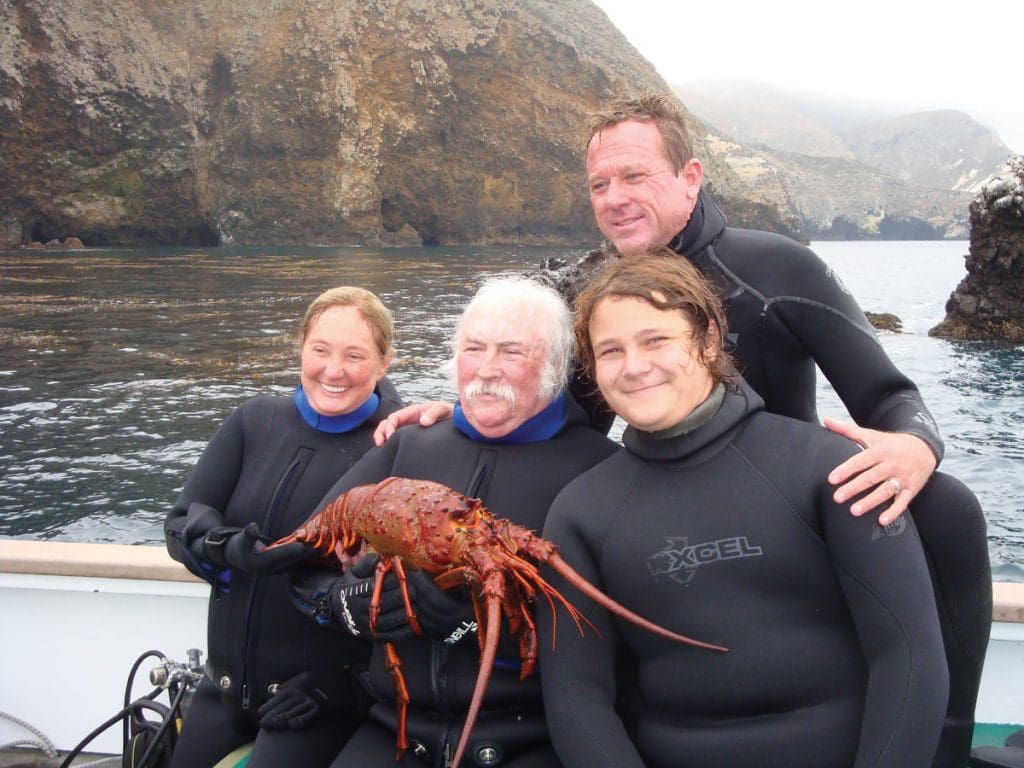
Ed with David Crosby’s family
Ed also realized how important it was to keep the older divers involved in diving. Ed made several dives helping Ernie Brooks and Zale Parry in Alaska, Socorro Island, Fiji and Guadalupe Island. He organized a reunion with Bev Morgan and Bobby Meistrel, founders of Dive n’ Surf and Body Glove Wetsuits. They had not been diving together in over 25 years. Bev introduced Ed to his best friend, David Crosby. It had been 15 years since David’s liver transplant and his last dive. David always talked about wanting to go diving again, so Ed said “David, quit talking. Let’s go.” After a couple pool sessions with his wife Jan and teaching their son Django how to dive, they all went to VoliVoli Beach Resort in Fiji. Zale Parry joined them and they all dove together.
In 2011, Ed ws the second youngest person (behind Wyland) to receive the prestigious NOGI Award from the Academy of Underwater Arts and Sciences. Today, Ed is on the Board of Directors of the organization, and with Dan Orr, Bonnie Toth and Harry Rabin organize the annual NOGI Awards Banquet, a black tie optional gala for around 300 people. Realizing how important it is to get younger people more involved in the diving industry, Ed and his friend Lee Selisky created the AUAS Lee Selisky Future Leaders of the Diving Industry Program. Ed is also the director of the AUAS Zale Parry Scholarship. This scholarship is very important to Zale. These scholars become part of her extended family.
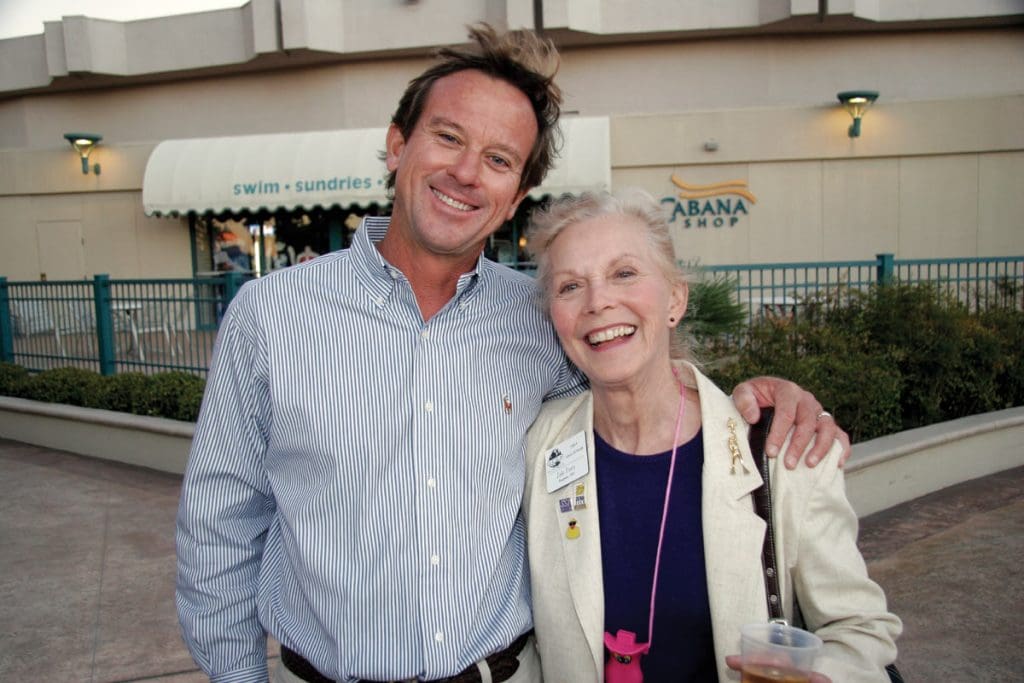
Ed with Zale Parry
Today, Ed continues to teach scuba at UCSB and organize dive charters to the California Channel Islands, Socorro Island, Fiji, the Sea of Cortez, Malpelo Island off Columbia, Yap, Cocos Island, Cuba, Galapagos Islands, Bahamas and other destinations. His San Ignacio Lagoon charters to see and pet the grey whales are annual trips that benefit the Santa Barbara Maritime Museum. Ed continues to work on his program ReDiscover Diving, a way to get certified but “rusty” divers back into diving. Each year, he continues working with the UCSB Scuba Club, getting divers to donate equipment that they no longer need. The gear is then given to the students who don’t own their gear and can’t afford to buy it. In 2025, over 200 pieces of gear were donated and given away for free to over 150 students, who are required to sign a contract that they will not resell the gear; if they no longer need it, it must be given to somebody who can use it. Ed hopes that other groups will follow these examples and begin similar programs across the United States to help young divers.
Ed Stetson is just a diver and claims to be nothing more. He loves creating events that bring divers together. His goal is to keep divers involved in diving, whatever their age or physical ability. He realizes how important it is to help young people. Ed has certified thousands of divers in the colder California waters including several NAUI instructors. His proudest accomplishment is having helped several hundred new divers find careers in marine related fields across the world. He could never have achieved this without the help & support of so many of his friends, especially his wife Mary and bother Dan.
And for all of that, we are proud and honored to place Ed Stetson in the company of so many of the special CSSA recipients that have come before.



